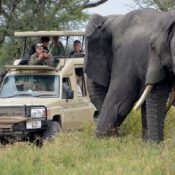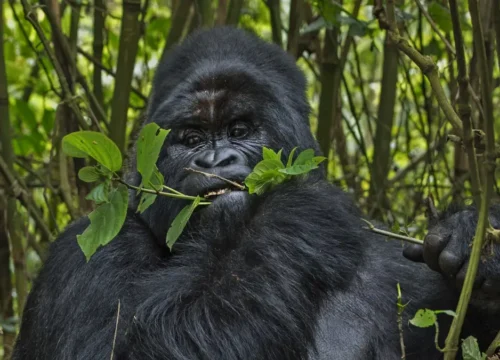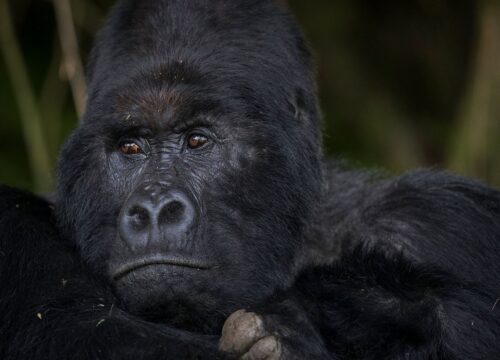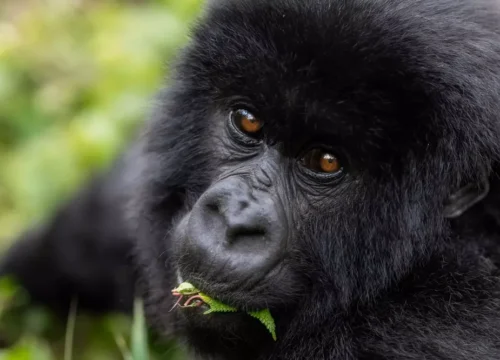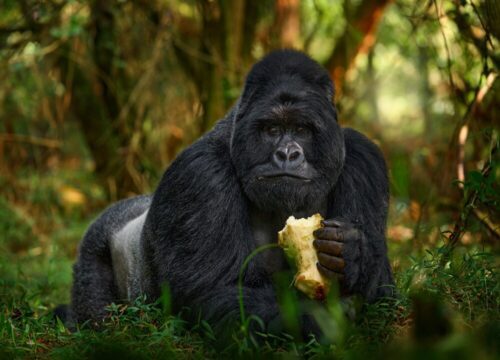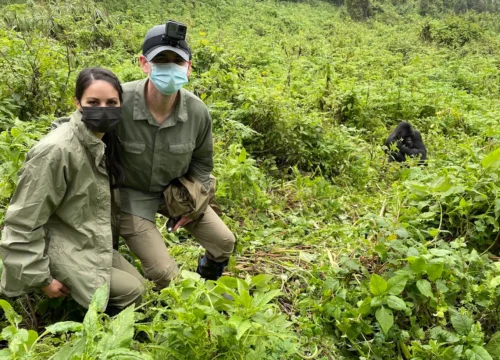The Best Guide to Gorilla Trekking In Africa
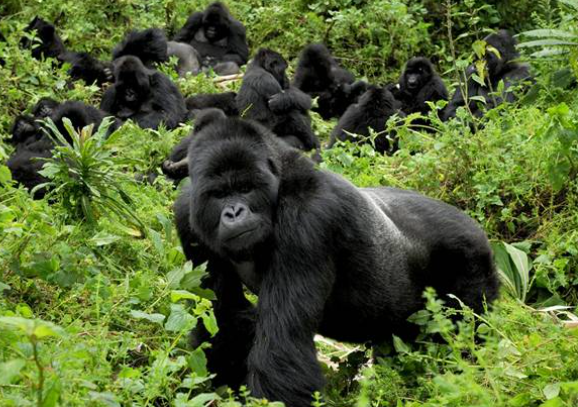
What is the meaning of gorilla trekking?
Gorilla trekking is an adventurous and immersive wildlife experience where individuals hike through dense forests in search of habituated gorilla groups. It typically takes place in the rainforests of central Africa, primarily in countries like Uganda, Rwanda, and the Democratic Republic of Congo, where mountain gorillas reside.
During gorilla trekking, participants are guided by experienced trackers and park rangers who help locate the gorilla families. Once the gorillas are found, trekkers can spend a limited amount of time observing and photographing them from a safe distance, usually around 7 meters away, to minimize disturbance and risk of disease transmission.
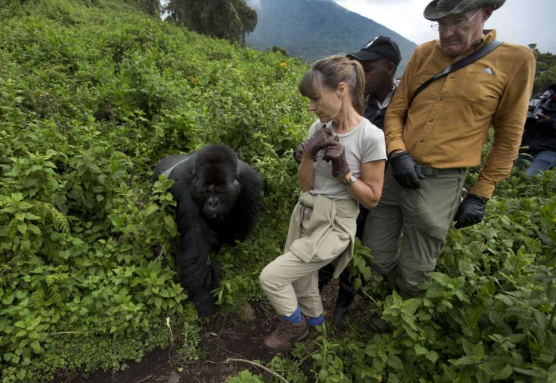
The activity not only offers a thrilling encounter with one of our closest relatives in their natural habitat but also promotes conservation efforts by generating income for local communities and raising awareness about the importance of protecting these endangered species and their habitats.
How difficult is Gorilla trekking?
Gorilla trekking can vary in difficulty depending on several factors, including the location of the trek, the terrain of the forest, the weather conditions, and the specific gorilla family being visited.
Here are some factors to consider regarding the difficulty level:
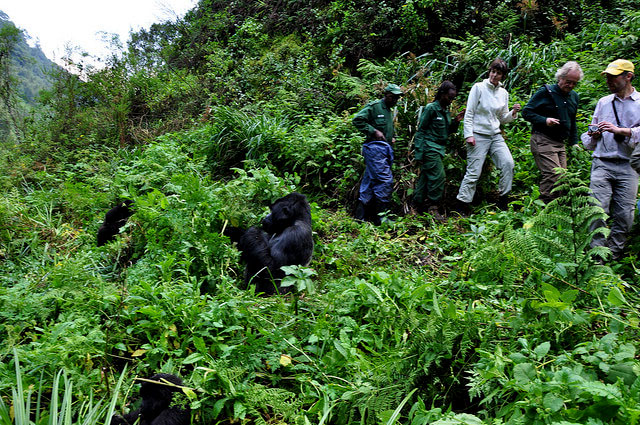
- Terrain: The terrain in the rainforests where gorillas reside can be challenging, with steep slopes, thick vegetation, and uneven ground. Trekking paths may involve navigating through dense vegetation, crossing streams, and climbing hills, which can be physically demanding.
- Altitude: In some locations, such as the Virunga Mountains in Rwanda and Uganda, gorilla trekking takes place at high altitudes. Altitude sickness can be a concern for some individuals, especially those who are not accustomed to high altitudes.
- Duration: Gorilla trekking expeditions can last anywhere from 1 to 8 hours or more, depending on the location of the gorilla group and how far they are from the starting point. Longer treks may require greater physical endurance.
- Weather: The weather in rainforest regions can be unpredictable, with rain showers common throughout the year. Trekking in wet and muddy conditions can make the hike more challenging and slippery.
- Fitness Level: While gorilla trekking is accessible to people of varying fitness levels, a reasonable level of fitness is recommended to navigate the terrain and endure the duration of the trek. Some tours may involve more strenuous hikes than others, so it’s essential to inquire about the specific requirements beforehand.
Overall, gorilla trekking is considered a moderate to challenging activity that requires a reasonable level of physical fitness and a spirit of adventure. However, most people with average fitness levels can participate with proper preparation and guidance from experienced guides and rangers.
What to expect gorilla trekking Rwanda?
Gorilla trekking in Rwanda offers a unique and unforgettable experience in the lush forests of Volcanoes National Park, home to several habituated gorilla families.
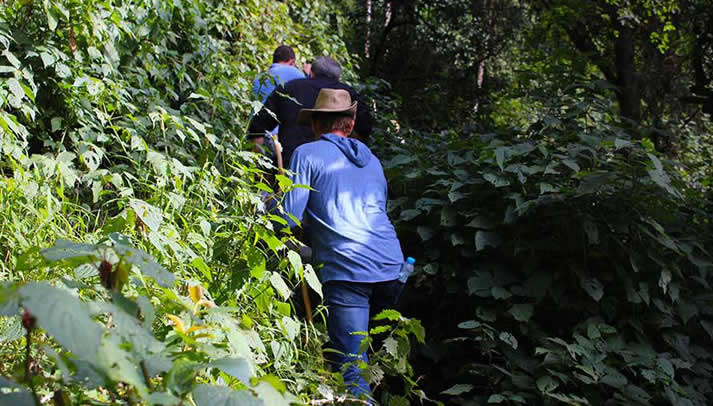
Here’s what you can expect during a gorilla trekking adventure in Rwanda:
- Briefing and Preparation: Before the trek begins, visitors receive a briefing from park rangers about the rules and regulations for gorilla trekking. This includes guidelines for approaching and observing the gorillas, as well as safety instructions.
- Hiking: Gorilla trekking in Rwanda involves hiking through the beautiful and sometimes challenging terrain of Volcanoes National Park. The hike can vary in duration and difficulty depending on the location of the gorilla family being visited, ranging from 1 to 4 hours or more.
- Encounter with Gorillas: Once the gorilla group is located, visitors typically spend up to one hour in their presence. You can observe the gorillas from a safe distance, usually around 7 meters away, while they go about their daily activities, such as feeding, playing, and interacting with each other.
- Close Interaction: While strict rules govern the distance and behavior around gorillas, it’s not uncommon for the curious primates to approach visitors out of curiosity. However, direct contact with the gorillas is not permitted to protect their health and safety.
- Photography and Observation: Visitors are allowed to take photographs and videos during the encounter, but the use of flash photography is prohibited. Observing these magnificent creatures in their natural habitat is a truly awe-inspiring experience that leaves a lasting impression.
- Cultural Experiences: In addition to gorilla trekking, visitors to Rwanda can also immerse themselves in the local culture by visiting nearby communities, learning about traditional customs, and supporting local initiatives.
Overall, gorilla trekking in Rwanda offers an incredible opportunity to connect with these endangered primates and contribute to their conservation while experiencing the beauty of Rwanda’s natural landscapes.
What is the difference between Rwanda and Uganda gorilla trekking?
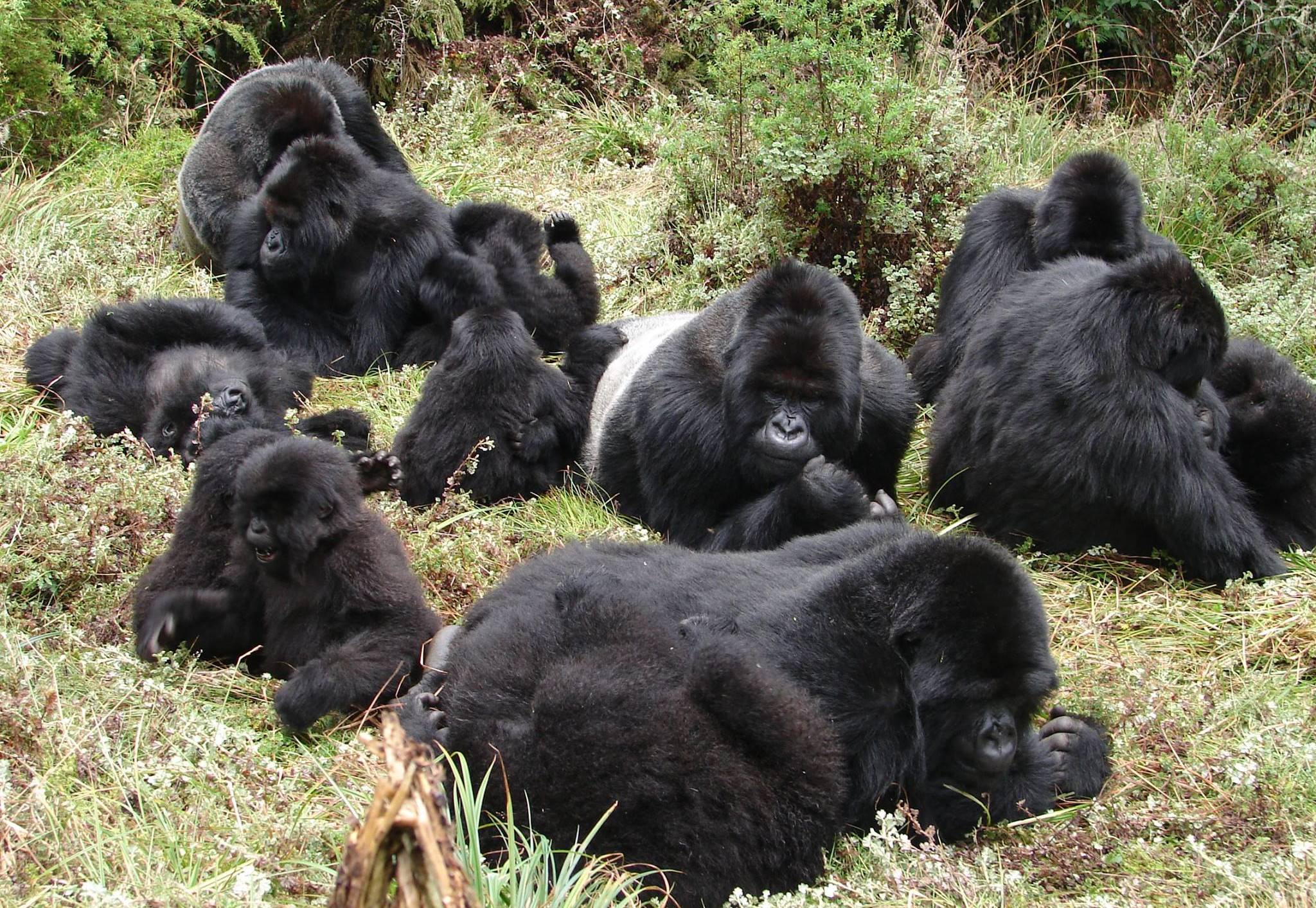
Gorilla trekking experiences in Rwanda and Uganda offer similar opportunities to encounter mountain gorillas in their natural habitat, but there are some differences between the two destinations:
- Location: Rwanda’s gorilla trekking takes place in Volcanoes National Park, located in the Virunga Mountains in the northern part of the country. Uganda’s gorilla trekking is conducted in Bwindi Impenetrable National Park and Mgahinga Gorilla National Park, both situated in the southwestern part of the country.
- Accessibility: Rwanda’s Volcanoes National Park is relatively easier to access from the capital city, Kigali, with a shorter travel time of around 2-3 hours by road. In contrast, reaching Uganda’s gorilla trekking destinations may require longer travel times, depending on the starting point and the specific park being visited.
- Cost: Gorilla trekking permits in Rwanda are typically more expensive compared to Uganda which is USD 1500 and USD 800 respectively.
- Terrain and Climate: The terrain and climate of the trekking areas differ between Rwanda and Uganda. Rwanda’s Volcanoes National Park is characterized by lush bamboo forests and higher altitudes, while Uganda’s Bwindi Impenetrable National Park features dense, tropical rainforests with rugged terrain. Weather conditions can also vary, with Rwanda experiencing cooler temperatures due to its higher elevation.
- Gorilla Groups: Both countries are home to habituated gorilla groups available for trekking, but the specific families and their behaviors may differ between Rwanda and Uganda. Each gorilla family has its own unique dynamics and personalities, offering visitors distinct experiences.
Ultimately, both Rwanda and Uganda offer incredible opportunities for gorilla trekking, and the choice between the two destinations depends on factors such as accessibility, budget, personal preferences, and travel logistics.
Is it safe to go gorilla trekking in Uganda?
Yes, gorilla trekking in Uganda is generally considered safe when conducted under the guidance of experienced guides and within designated national parks. Uganda’s Bwindi Impenetrable National Park and Mgahinga Gorilla National Park are well-established gorilla trekking destinations with strict regulations in place to ensure the safety of visitors and the protection of the gorillas.
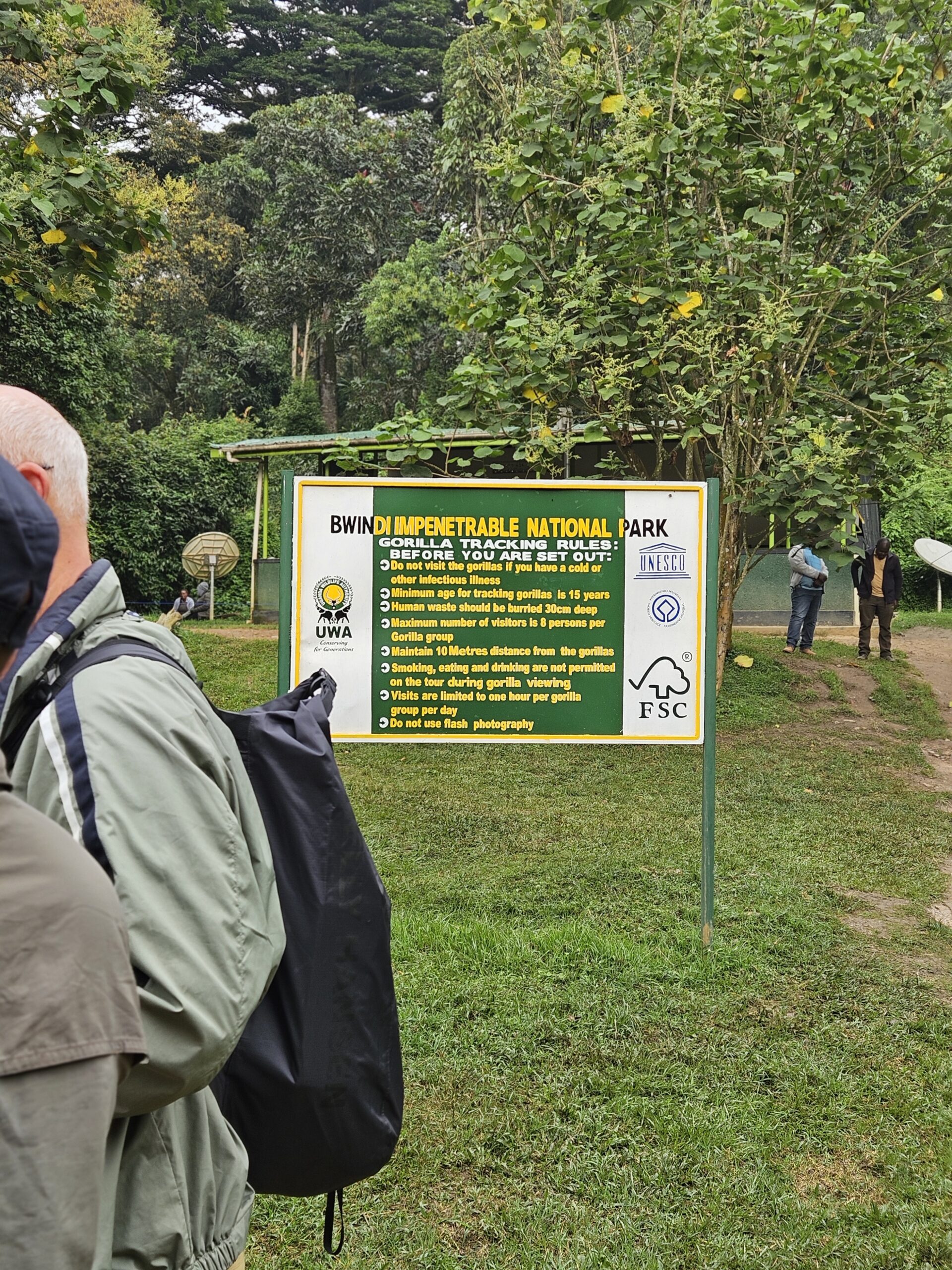
Here are some reasons why gorilla trekking in Uganda is considered safe:
- Experienced Guides and Rangers: Gorilla trekking expeditions in Uganda are led by experienced guides and park rangers who are familiar with the terrain, wildlife behavior, and safety protocols. They accompany visitors throughout the trekking experience and provide guidance to ensure a safe and enjoyable encounter with the gorillas.
- Habituated Gorilla Groups: The gorilla families available for trekking in Uganda’s national parks are habituated to the presence of humans, which means they are accustomed to the presence of visitors and generally tolerate their presence well. This reduces the likelihood of aggressive behavior towards trekkers.
- Strict Regulations: Uganda’s national parks have strict regulations in place to protect both visitors and gorillas. These regulations include maintaining a safe distance from the gorillas, limiting the number of visitors allowed to visit each gorilla group per day, and enforcing rules against behaviors that could disturb the gorillas or their habitat.
- Park Security: Uganda’s national parks prioritize the safety and security of visitors, with measures in place to prevent and respond to potential risks or emergencies. Park authorities work to ensure that visitors are accompanied by armed park rangers and that proper safety protocols are followed throughout the trekking experience.
While gorilla trekking in Uganda is generally safe, it’s essential for visitors to adhere to the guidance of their guides and follow the park’s regulations to minimize risks and ensure a positive experience for both humans and gorillas. Additionally, visitors should consult with their healthcare provider regarding any necessary vaccinations or health precautions before traveling to Uganda.
How much does it cost to go gorilla trekking in Uganda?
The cost of gorilla trekking in Uganda can vary depending on several factors, including the time of year, the specific national park visited, and the tour operator chosen. However, the primary cost associated with gorilla trekking is the permit fee, which is set by the Uganda Wildlife Authority (UWA). As of 2024, here are the permit fees for gorilla trekking in Uganda:
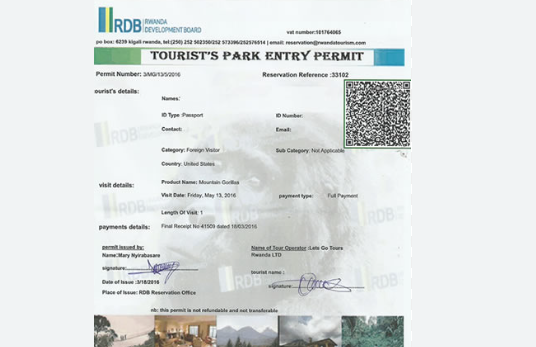
- Uganda Resident: The permit fee for Ugandan residents is significantly lower than for international visitors which is UGX 250,000
- Foreign Non-Resident Foreigner: The permit fee for non-resident foreigners is higher than for residents. it $800 USD per permit.
- For Forign residents, the permit is $700 USD per permit.
These permit fees typically cover the cost of park entry, guide fees, and ranger services. It’s essential to note that gorilla trekking permit fees are subject to change, so it’s advisable to check with the Uganda Wildlife Authority or a trusted tour operator for the most up-to-date information.
In addition to the permit fee, there may be additional costs associated with gorilla trekking, such as transportation to and from the national park, accommodation, meals, and optional activities. The total cost of a gorilla trekking experience in Uganda will depend on factors such as the duration of the trip, the level of luxury or budget accommodations chosen, and any additional services included in the tour package.
It’s recommended to book gorilla trekking permits well in advance, as they are limited in number and can sell out quickly, especially during peak seasons. Working with a reputable tour operator can help ensure a smooth and enjoyable gorilla trekking experience in Uganda.
Plan your Uganda, Rwanda or Congo gorilla safari with Nextgen Safaris. We’re local and have a sizeable sustainable travel footprint you can trust.
Send us an email at info@nextgensafaris.com
Whatssap Inquiry: +4915754442208 for a quick response
A Guide to Gorilla Trekking
ENTRY REQUIREMENTS:
A Guide to Gorilla Trekking in Uganda, Rwanda or Congo, all visitors must have a valid passport with at least 4 consecutive blanks pages. Any applicable visa and/or relevant documentation are the responsibility of the traveller. For further information on Visa requirements visitors are advised to contact their nearest East African Embassy or Consulate. Apply Visa online here
LANGUAGE:
English
TIME:
GMT +3
VOLTAGE:
220 Volts/AC50Hz. Sockets are UK style, 3 pin square plugs. Power is from the UMEME in the city/major towns and generator with inverter back up in the Safari Lodges and Camps.
CURRENCY:
Foreign currency must be changed at the Bank, Bureau de Change, and Hotel/Safari lodge/Camp/Resort. Major Credit Cards, Master card, Visa, American Express, are usually accepted throughout the country. Where credit cards are accepted, the payment will normally be recorded in US$ regardless of the card’s default currency.
CLOTHING:
Dress is mainly informal and should be comfortable as well as practical. Something warm should be brought along for early morning and evenings. Safari clothes are available from hotels/lodges/camps.
BAGGAGE:
Where possible, travel light. Baggage space on safari is limited to medium suitcase or soft bag per person plus reasonable amount of hand luggage. There is 15 Kilogram per person limit on all flights to the wildlife sanctuaries. Excess luggage must be stored in your arrival hotel.
WATER:
You will find many different of opinion of what is safe and what is not. We recommend for peace of mind, to drink local Bottled Mineral water. It is important to drink plenty of water especially during the hotter months. We would recommend that guests drink at least 2 to 3 liters of water per day to limit the effects of dehydration.
HEALTH;
East Africa is a safe and secure destination; however, it is a good idea to take a few precautions. Kindly consult your GP or local doctor at least 6 weeks before you travel, with regards:
Malaria prophylactics. East Africa is a known malaria area and preventive measures are essential. You are advised to take one of the recommended anti-malarial drugs. Be sure to wear long sleeved shorts and trousers after sunset and spray the exposed parts of your body with a mosquito repellent spray
Remember to protect yourself from direct sun rays with sunscreen cream or safari hat.
DIETARY REQUIREMENTS:
For those guests with specific dietary requirement, please ensure we are notified prior to travel
GRATUITIES:
As a guideline and dependent on how happy you are, we would suggest the following:
The General Hotel/Lodge/Camp Staff – Approximately U$ 10.00 per person per day
Driver Guides – Approximately US$ 15.00 to US$ 20.00 per person per day
PHOTOGRAPHY:
Please be careful when photographing public buildings, airports, bridges, the national flag and people in uniform. Ensure that you have sought permission before photographing local people and their villages. If in doubt, please check with your guide.
Book a Customized Safari
Read about
10 Things you Should NOT DO on an African Safari.
What to expect on a safari in Uganda.
Bwindi Impenetrable National Park
How to Choose the Best Tour Operate for Your Safari in Africa
12-Day Gorilla Tracking in Bwindi
Some of our African Safaris
1 Day Jinja Ultimate tour Experience
1 Day White Water Rafting in Jinja
3 Days Bwindi Gorilla Habituation via Rwanda
3 Day Birding Safaris and Photography in Uganda
3 Day Safari to Queen Elizabeth National Park
3 Day fly in Gorilla Trekking Safari from Masai Mara
3 Day Grand Gorilla Trekking Safari
4 Day Chimpanzee and Gorilla Trekking Safari
4 Day Murchison Falls and Jinja tour
Gorilla Trekking Safaris
1 Day Uganda Gorilla Trekking Safari from Kigali Rwanda
3 Days Fly in Gorilla Habituation Safari
3 Days Budget Gorilla Safari in Uganda
3 Days Customizable Rwanda Gorilla Tracking Safari
3 Days Gorilla Trekking Experience and Lake Bunyonyi
3 Days Last Minute Gorilla Trekking & Lake Bunyonyi in Uganda
3 Days Rwanda to Uganda Gorilla Safari
3 Days Uganda Gorilla Safari from Kigali
4 Days Gorilla and Golf Safari in Uganda
4 Days Rwanda Gorilla Adventure
5 Day Gorillas and Game Drive Safari
5 Days Golf and Gorilla Safari in Uganda
5 Days Rwanda Gorillas and Culture Tour
6 Day Uganda Gorilla and Wildlife Tour
6 Days Budget African Safari with Gorilla Trekking
7 Days Gorilla and Chimpanzee Trekking in Uganda
7 Days Uganda Budget Gorillas and Primate Trip
8 Days Gorilla Trekking Vacation to Bwindi National Park
8 Days Uganda Gorilla and Chimpanzee Safari
Recent Posts
Last Minute Deals
Quick booking process
+49 1575 4711313



